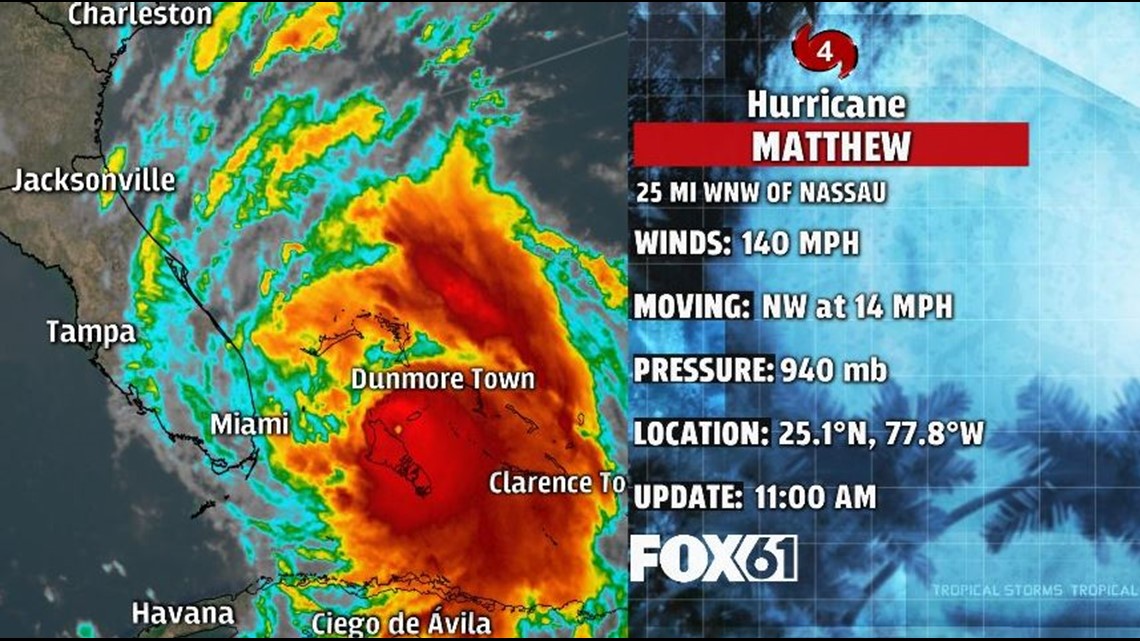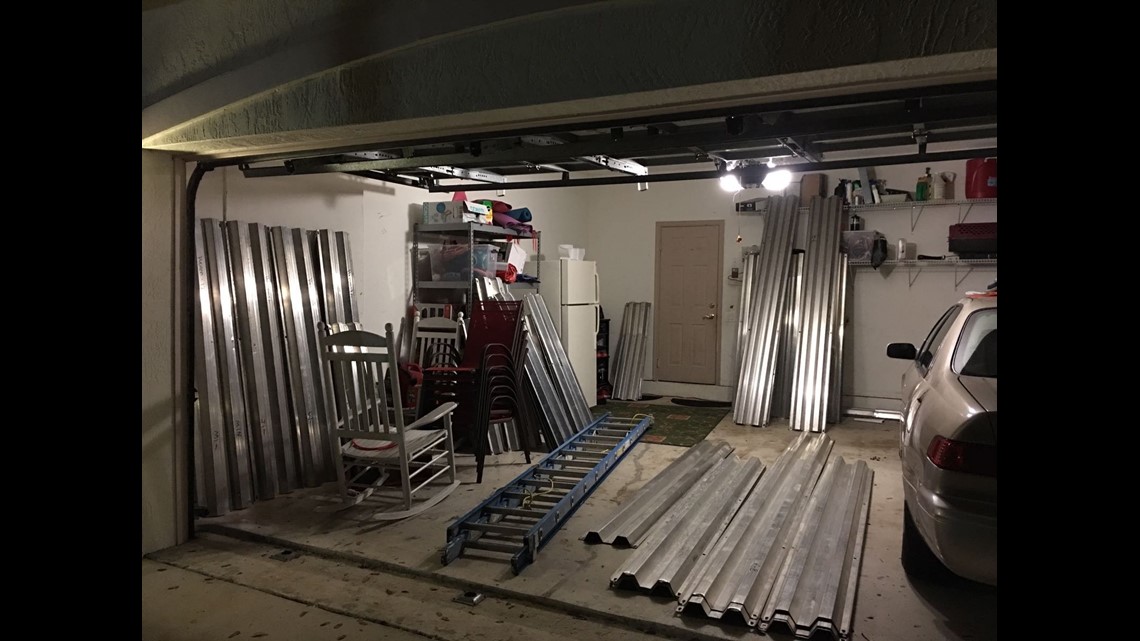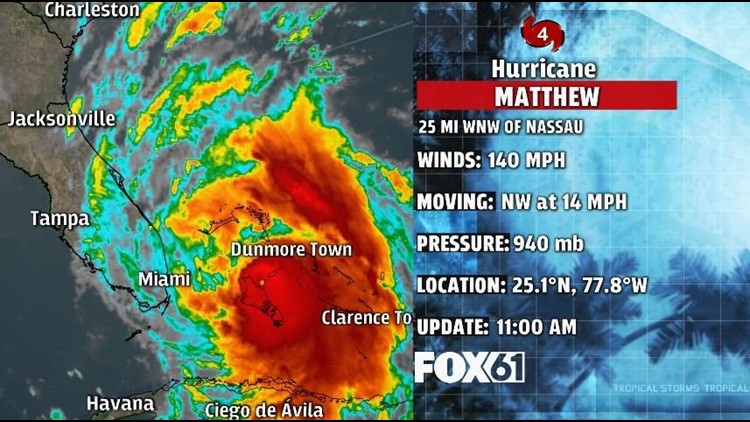WEST PALM BEACH, Fla. – President Barack Obama declared a state of emergency in Florida and South Carolina as potentially catastrophic Hurricane Matthew approaches.
According to Florida Power & Light, 81,510 customers are without power as Hurricane Matthew nears the coast.
Obama has ordered federal aid to supplement state, tribal, and local response efforts to Hurricane Matthew.
Obama’s action authorizes the Department of Homeland Security and the Federal Emergency Management Agency to coordinate efforts to alleviate the suffering caused by the hurricane. The directive applies to more than two dozen counties in Florida and South Carolina.
Hurricane Matthew, a “very dangerous” Category 3 storm, is expected to hit Florida early Friday. It will then turn north and head up the US coast.
CNN reporters are in areas under threat. Here’s what we’re seeing on the ground, beginning in the south of Florida and continuing north on the storm’s path.
Daytona Beach, Florida
Conditions have deteriorated significantly in the last 24 hours. Bands of wind and rain keep getting stronger and stronger — this is just the very beginning.
Most stores on the boardwalk have been boarded up; water is surging and coming up higher and higher on the pier.
Daytona Beach’s no-nonsense police chief, Michael Chitwood, is out and about, warning those who haven’t left: “There will be a point where we can’t rescue you.”
Daniel Myara of Crusin’ Cafe is boarding up, and staying put. He plans to stay open even though he’s only 150 yards from the beach. He’s lived in town for 25 years and knows this storm is going to be bad.
But Myara said riding out the storm at his business and securing it is most important to protect it.
“We’re going to try and hunker down here,” he said.
Abdul owns a gas station in the area and is no stranger to dangerous situations. He survived war in Lebanon before coming to America 25 years ago.
He’s ridden out storms in a back room of the gas station before. But not this time. This storm scares him too much. So he’s heading away from the gas station Thursday night to be with his family, safely away from the beach.
“Mother Nature is very tough,” he said. “This is going to be like 1992 in Andrew … it doesn’t look good.”
Emergency declarations are designed to help provide emergency services to protect lives and property, and to lessen the threat of a catastrophe.
The hurricane has strengthened into a Category 4 hurricane with winds of 140 mph and gusts up to 165 mph, according to the National Hurricane Center. Matthew continues to head towards Florida’s east coast and is expected to hit the coast late Thursday or early Friday.
State officials in Florida, South Carolina and Georgia cautioned residents not to hunker down at home if they live in the hurricane’s potential path.


Here’s what you need to know now about the powerful storm that forecasters say is gaining strength:
• The storm has already killed at least 110 people in three Caribbean countries. Over 100 died in Haiti alone, said Civil Protection Service spokesman Joseph Edgard Celestin, who says communication issues have prevented authorities from assessing the damage and casualties in the far southwest portion of the country.
• Authorities urged more than 2 million people to leave their homes in coastal Florida, Georgia and South Carolina as the storm neared — the largest mandatory evacuations in the United States since Hurricane Sandy hit the East Coast in 2012.
• Based on the latest projections, Matthew could make landfall in Florida early Friday as a Category 4 hurricane. It could also skirt the coast as it continues north. While Matthew’s outer bands were already starting to hit Miami-Dade County by mid-morning, Mayor Carlos Jimenez said there’s a bit of good news: “The probability of sustained hurricane winds has gone down 13%.”
• The Category 3 storm is moving northwest at about 12 mph and packing 125 mph (205 kph) winds. Thursday morning it was about 30 miles (45 km) south-southwest of Nassau, Bahamas, and 215 miles (350 km) from West Palm Beach, Florida.
• Florida Gov. Rick Scott offered a dire warning Thursday morning for people living in evacuation zones: “This is serious. … Don’t take a chance. A small movement (of the storm) could mean a lot. That’s why we have to prepare for a direct hit. So again, if you need to evacuate and you haven’t, evacuate. This storm will kill you. Time is running out. We don’t have that much time left.”
• “This could be an extremely disastrous hurricane for so many large areas where so many people can be affected,” National Hurricane Center Director Rick Knabb told CNN Thursday. “It’s not just going to come ashore and affect a narrow zone and then move on. It’s going to be going up the coast and could remain a major hurricane at the coast, or very close to it, the whole way up. That’s awful.”


Florida braces for direct hit
Gov. Scott warned 1.5 million residents they had 24 hours to get ready, or better yet, get going.
A direct hit by Matthew, he said, could lead to “massive destruction” on a level unseen since Hurricane Andrew devastated the Miami area in 1992. Voluntary and mandatory evacuations in his state stretch from the Miami area all the way north to the Florida-Georgia border.
People who stayed behind stocked up on supplies and boarded up windows.
Many residents found long gas lines Wednesday. But so far, the state isn’t running short on supplies, Scott said.
Airline passengers were urged to call before leaving for the airport. Fort Lauderdale’s airport closes Thursday at 10:30 a.m. and Miami international Airport said in a tweet that it had canceled almost 650 flights and is expecting most flights to be canceled by noon. Orlando International, which has already seen 180 flights canceled, will stop flights at 8 p.m. ET, spokeswoman Carolyn Fennell said.
Tampa International Airport has reported a handful of cancellations and delays, while Jacksonville International Airport intends to remain open as long as planes can fly in, spokeswoman Debbie Jones said.
Palm Beach residents cleared many grocery store shelves ahead of the storm.
In Jupiter, resident Randy Jordan told CNN affiliate WPEC people were pushing and shoving their way through the local Home Depot to buy supplies ranging from batteries to flashlights.
Residents still had a sense of humor. Olivia A. Cole posted a photo on Twitter of an empty grocery shelf, save for eight cans of a soup typically enjoyed in another part of the country. “South Florida wants to survive #HurricaneMatthew. But we’d rather die than eat clam chowder,” Cole joked.
Mandatory evacuations in South Carolina
Cars packed highways in South Carolina, where Gov. Nikki Haley gave evacuation orders for the coastal counties of Charleston and Beaufort.
So far, about 250,000 people have left the area. And as many as 200,000 people will leave Thursday, said Kim Stenson, the director of South Carolina Emergency Management.
Tempers apparently flared during the slow traffic. A man got out of his truck at a point where vehicles were being redirected, removed a traffic cone and sped away. Police chased the man until he stopped on a dead-end road. The man fired at deputies and police officers, who shot back and wounded him, Berkeley County Chief Deputy Mike Cochran told CNN. The man was hospitalized, but his condition is unknown.
The South Carolina Department of Transportation changed the directions of eastbound traffic lanes to accommodate the exodus of people leaving coastal cities like Charleston.
As thousands fled inland, some people said they were staying put. In Charleston, which likely will feel Matthew’s impact this weekend, residents boarded up businesses and prepared to hunker down.
Cheryl Quinn said she and her husband were fine a year ago when Charleston endured heavy rain after a brush with a big storm.
“It was kind of a party down here. I hate to say that,” she said, adding that storms can be scary, too.
But she told CNN she’s reserved a hotel room, just in case.
North Carolina playing it by ear
North Carolina Gov. Pat McCrory declared a state of emergency for more than half the state’s 100 counties. So far, though, the governor has not urged residents to evacuate.
The changing forecast now predicts the storm won’t have as great an impact on the state as once feared, and Matthew might even turn around before it gets there.
“We’re just going to have to play it by ear and have our resources ready,” the governor said.
Officials are still concerned areas in eastern North Carolina that were recently flooded will see drenching rains from Matthew.
Georgia governor: ‘Remain calm, be prepared’
Georgia Gov. Nathan Deal has declared a state of emergency in 30 counties on or near the Atlantic Coast and ordered evacuations for several counties, all on the coast, east of Interstate 95.
Of special concern is Tybee Island, a low-lying island east of Savannah, which is also under mandatory evacuation orders.
“Remain calm, be prepared and make informed, responsible decisions,” Deal said.



